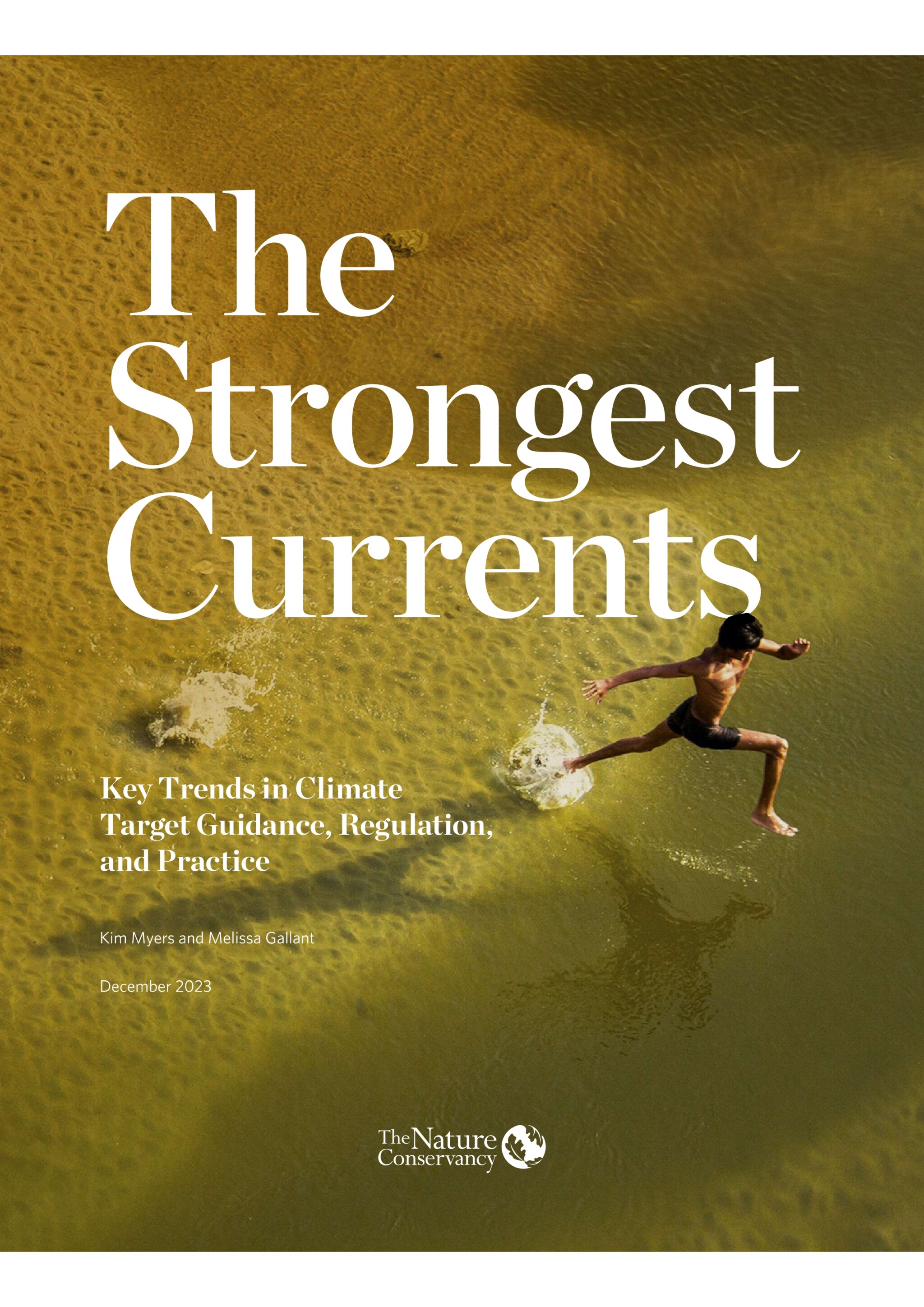
The Strongest Currents: Key Trends in Climate Target Guidance, Regulation, and Practice
Climate scientists generally agree that to limit warming to 1.5° Celsius (C), we need to halve global greenhouse gas (GHG) emissions by 2030 and attain net zero emissions by around 2050 (IPCC 2018). Companies play a key role in this transition to a low-carbon economy, and many are voluntarily committing to reduce their emissions in line with limiting warming to 1.5°C by reducing their net GHG emissions to zero by 2050 – so-called “net zero” pledges.
But recent studies show that many corporate pledges lack the necessary integrity and transparency to be deemed fully credible. Without assurances that these pledges are both real and achievable, companies are liable to be accused of greenwashing and, in some cases, even face legal action due to accusations of false advertising. In addition, the claims companies are making about their emissions reduction targets and actions are largely dictated by a series of voluntary standards and best practice guidelines that, at times, can be challenging to navigate, leading to confusion among corporates seeking to set and meet their climate commitments.
In this paper, we explore the state of the climate-related claims landscape for companies, including a summary of current voluntary standards and guidance, corporate adherence to best practices, and government oversight through regulation, legislation, and litigation. We focus our discussion on topics most relevant to hard-to-abate sectors (i.e., fossil fuel-reliant industries with extremely high abatement costs) and land-intensive sectors. Finally, we identify a series of gaps in the current voluntary and regulatory efforts to point the direction towards a more effective net zero movement.
